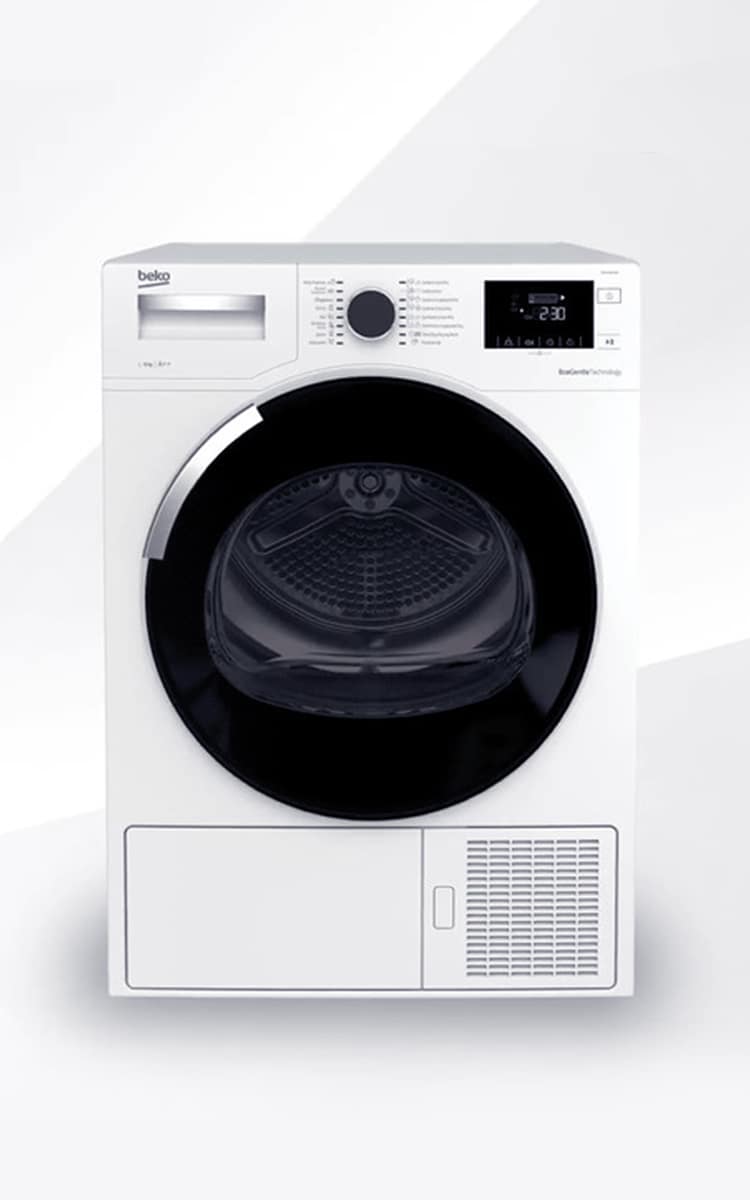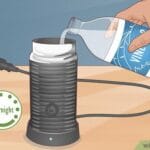Imagine you’re enjoying a quiet evening at home, but suddenly, a loud clunking or rattling sound disrupts the peace. It’s coming from your dryer.
When your dryer makes noise while tumbling, it’s not just annoying; it can also be a sign that something is wrong. You might wonder if it’s a minor issue or something that requires urgent attention. The good news? You’re not alone, and there are simple solutions to silence that racket.
We’ll help you understand why your dryer is noisy, what potential problems could be lurking, and how you can fix them without breaking a sweat. Dive in and discover how to regain the tranquility of your home and extend the life of your appliance.
Common Causes Of Noisy Dryers
Dryers often make noise due to worn-out belts, loose drum seals, or faulty bearings. A rattling sound might indicate objects trapped in the drum. Regular maintenance helps prevent these common issues, ensuring quieter operation.
Is your dryer making more noise than usual? It’s not only annoying but could be a sign that something’s amiss. Understanding the common causes of noisy dryers can save you time and money while preventing bigger problems down the road. Let’s dive into some specific culprits that might be causing the racket.Loose Drum Bearings
Drum bearings help your dryer drum turn smoothly. When these bearings become loose, the friction can cause a loud, persistent noise. It might sound like a high-pitched squeal or a rhythmic thumping. If you’ve ever heard a loud hum from your dryer, it could be loose bearings. Tightening or replacing them can often solve the problem.Worn Out Drive Belt
The drive belt wraps around the dryer’s drum, motor pulley, and tension pulley. Over time, it can become frayed or stretched, leading to a slapping or thumping sound. A worn belt might also cause the drum to turn erratically. Replacing the drive belt is a straightforward fix that can restore peace and quiet to your laundry room.Faulty Motor
The motor is the heart of your dryer. A faulty motor can produce grinding or buzzing noises, indicating it’s struggling to function. You might even notice a burning smell if the motor is overheating. If you suspect your motor is the issue, it might be time to consult a professional to assess whether repair or replacement is necessary.Misaligned Pulleys
Pulleys keep your dryer’s drum and belt aligned. When they become misaligned, you might hear a screeching or whirring noise. This misalignment can cause additional wear on the belt and drum, leading to more significant issues if left unchecked. Adjusting the pulleys back into place can often resolve the noise. Have you ever fixed a noisy dryer yourself? It can feel empowering to troubleshoot and solve these issues. Understanding these common causes not only helps maintain your dryer but also extends its lifespan. So, next time your dryer starts serenading you with strange sounds, you’ll know just where to start your investigation.
Credit: www.beko.com
Identifying The Source Of The Noise
Strange sounds from your dryer can be annoying. First, pinpoint the noise source. It might be loose objects, a worn drum belt, or faulty rollers. Identifying the problem helps you fix it and enjoy quiet laundry days again.
Is your dryer making an unusual noise when tumbling? It’s not just an annoyance; it could be a sign of a problem that needs fixing. Identifying the source of the noise is crucial to ensuring your dryer continues to operate efficiently and safely. Let’s dive into the steps you can take to pinpoint exactly what’s causing those unsettling sounds.Listen For Specific Sounds
Start by paying attention to the type of noise your dryer is making. Is it a thumping, squealing, or grinding sound? Each noise can point to different issues. A thumping noise might suggest a problem with the drum, while a squealing sound could be the result of a worn belt or motor bearings. If you hear a grinding noise, it might be an issue with the drum support rollers. Take a moment to listen carefully to the rhythm and type of noise, as this is your first clue in solving the mystery.Inspect Internal Components
Once you’ve identified the type of noise, it’s time to inspect the internal components of your dryer. Unplug the dryer and safely open it up. Look for visible signs of wear and tear. Check the drum, belts, and rollers for any obvious damage. If you spot cracks or excessive wear, replacing these components could solve the noise issue. Don’t forget to examine the motor and blower wheel. They can also contribute to unusual sounds if they’re not functioning properly.Check For Loose Objects
Sometimes, the source of the noise is more straightforward than you think. Check for loose objects inside the drum. Coins, buttons, or other small items might have fallen out of clothing and are clattering around during the drying cycle. Remove any foreign objects you find. This is often a quick fix that can immediately solve the noise problem. Have you ever found a rogue sock stuck in the drum? Such small things can create big sounds. By following these steps, you can often identify and address the cause of the noise without needing to call in a professional. Is your dryer still making noise after checking these points? It might be time to consult a technician to avoid further damage.Diy Solutions For Dryer Noise
Dealing with a noisy dryer can be frustrating, especially when you’re trying to enjoy some peace at home. You might be surprised to learn that many dryer noise issues can be resolved with a few DIY solutions. Whether it’s a rattling drum or a squeaky belt, these fixes can save you a call to the repairman and extend the life of your appliance. Let’s dive into some practical steps you can take to silence that annoying dryer noise.
Tightening Drum Bearings
Do you hear a rumbling sound when your dryer is tumbling? It could be loose drum bearings. These small components help your dryer drum spin smoothly. When they wear out or become loose, your dryer can sound like a freight train. Tightening or replacing these bearings can often solve the noise problem.
First, unplug your dryer for safety. Then, access the drum by removing the dryer’s back panel. You’ll see the bearings attached to the drum. Tighten any loose screws or bolts around the bearings. If the bearings are worn out, consider replacing them. It’s a simple task that can make a big difference.
Replacing The Drive Belt
Is your dryer making a high-pitched squeal? The drive belt might be the culprit. This belt wraps around the drum and motor, helping the drum spin. When it gets worn or frayed, it can create a shrill noise. Replacing the drive belt can be a straightforward solution.
Begin by unplugging the dryer and removing the top and front panels. You’ll find the belt looped around the drum. Carefully remove the old belt and install a new one, ensuring it’s tightly secured around the motor and drum. With the new belt in place, your dryer should run quietly.
Adjusting Or Replacing Pulleys
Does your dryer sound like it’s grinding or scraping? The pulleys might need attention. These components help guide the drive belt and keep it aligned. Misaligned or worn pulleys can create friction, leading to noise.
Start by unplugging the dryer and removing the panels to access the pulley system. Check if the pulleys are out of alignment or damaged. Adjust any misaligned pulleys or replace worn ones. This can help the belt move smoothly, reducing noise significantly.
Have you tried any of these DIY solutions yet? It’s empowering to fix things yourself, and with these tips, you might find your dryer running as quietly as the day you bought it. Why not tackle the noise issue today and enjoy a quieter home?

Credit: www.youtube.com
When To Call A Professional
Strange noises from your dryer suggest underlying issues like worn-out belts or loose components. Consider calling a professional if unusual sounds persist despite basic troubleshooting. Ensuring timely repairs can prevent further damage and extend the appliance’s lifespan.
When your dryer starts making unusual noises, it can be both annoying and concerning. While some sounds may be easily fixed, others might signal a more serious problem. Knowing when to call a professional can save you time, money, and frustration. It can also ensure your dryer remains safe to use. Here’s how to identify when expert help is necessary.Persistent Noise Issues
If your dryer continues to make noise after you’ve tried basic troubleshooting, it’s time to call in the pros. This could include checking for loose items in the drum or ensuring the dryer is level. Persistent noises may indicate issues with internal components like the motor or drum rollers. Your attempts to fix these on your own might not only be ineffective but could also worsen the problem. Have you noticed a grinding or squealing sound that just won’t go away? This could mean that parts like the bearings or belts are worn out. A professional can accurately diagnose and replace faulty components. Ignoring these noises might lead to more serious damage. So, think about whether the cost of waiting is worth the risk.Complex Repairs Required
Some dryer issues are simply too complex to handle alone. If the noise suggests a problem with the dryer’s motor or electrical components, it’s wise to call a professional. Attempting these repairs without the proper knowledge can lead to further complications. Have you ever taken something apart and then struggled to put it back together? With a dryer, this could result in more than just frustration. Complex repairs often require specialized tools and expertise that only a professional can provide. Consider the value of your time and effort. Sometimes, calling an expert can be the most efficient solution.Safety Concerns
Safety should always be a top priority. Unusual noises can sometimes indicate safety hazards like electrical malfunctions or gas leaks in gas-powered dryers. If you suspect any risk, it’s crucial to call a professional immediately. Handling electrical or gas components without training poses significant risks. A certified technician has the skills and tools to address these issues safely. Would you risk your safety to save a few dollars on repairs? Ensuring your home and family are safe is always worth the cost of professional help. In moments of doubt, remember that a professional can provide peace of mind. They can ensure your dryer is functioning correctly and safely, allowing you to return to daily life without worry.Preventive Measures For Quiet Operation
Ensure a quiet dryer by checking for loose screws and worn-out parts. Clean the drum and lint filter regularly. Balance the dryer on a flat surface to reduce noise during operation.
Preventing noise from your dryer ensures smooth operation. It also extends its lifespan. Follow these preventive measures to maintain a quiet dryer. These steps are simple. They require minimal effort. Yet, they bring significant benefits.Regular Maintenance Tips
Regular cleaning prevents dust buildup. Clean the lint trap after every use. This enhances airflow. It reduces strain on the dryer. Vacuum the vent duct monthly. It removes trapped debris. A clear vent duct minimizes noise. It also improves drying efficiency. Check the drum support rollers. Lubricate them if needed. Proper lubrication reduces friction noise.Proper Loading Techniques
Even load distribution is crucial. Avoid overloading the dryer. It strains the motor. It causes unnecessary noise. Distribute clothes evenly. This prevents imbalance. Use smaller loads for large items. Heavy items should not be overloaded. Balance the weight inside. It promotes quieter operation.Routine Inspections
Inspect the dryer regularly. Listen for unusual sounds. Loose parts may cause noise. Tighten screws and bolts. Check the drum belt condition. Replace worn belts promptly. Examine the motor mount. Ensure it is secure. Regular inspections catch issues early. It prevents expensive repairs.
Credit: www.connersappliance.com
Frequently Asked Questions
Why Does My Dryer Make A Loud Noise?
A loud noise can be from worn-out drum bearings or a loose belt. Check these parts first.
How Can I Fix A Noisy Dryer?
Inspect the drum bearings and belts. Replace them if worn. Lubricate moving parts to reduce noise.
Is A Noisy Dryer Dangerous?
Yes, it can be. It might indicate a mechanical problem. Fix it to avoid further damage.
Can I Use My Dryer If It’s Noisy?
It’s best not to. Using it might worsen any existing issues. Repair it first.
How Often Should I Service My Dryer?
Service your dryer once a year. Regular maintenance helps prevent noise and extends its life.
Conclusion
Fixing a noisy dryer is simpler than you think. First, pinpoint the noise source. Check for loose parts or worn belts. Sometimes, a quick adjustment solves the issue. Regular maintenance prevents future noises. Clean lint filters and inspect dryer vents.
These steps improve dryer performance. If problems persist, consult a professional. They diagnose complex issues. Remember, a quiet dryer is a happy appliance. It saves energy and lasts longer. Follow these tips for a peaceful laundry day. Keep your dryer in top shape, and enjoy the silence.





